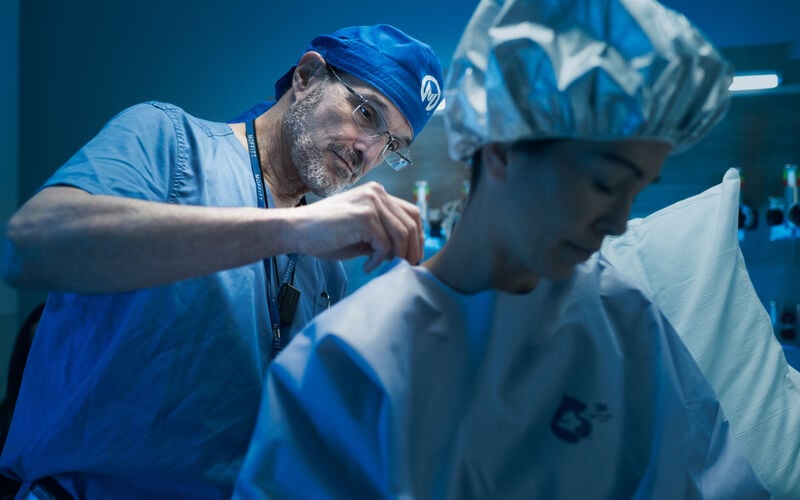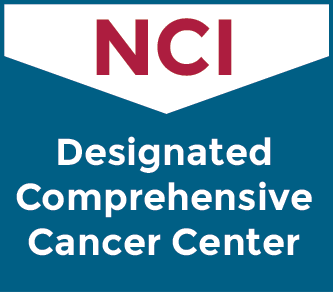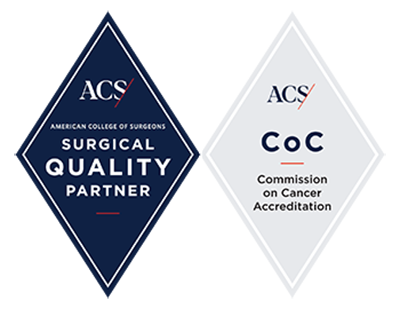Squamous Cell Carcinoma Surgery

Squamous cell carcinoma (SCC) is a common cancer that arises in squamous cells, which make up the outer layer of skin (epidermis). Although SCC often develops in areas of the body regularly exposed to ultraviolet (UV) light—such as the face, ears, neck and hands—it can also occur in “hidden” mucous membranes, such as the inner lining of the mouth, lungs and anus. Warning signs may include a rough, scaly skin patch, a sore that does not heal or a raised skin growth with a visible depression in the center. If left untreated, the cancer can grow into deeper layers of skin and spread to nearby lymph nodes and other tissues.
Typically, the diagnostic process for squamous cell carcinoma consists of a skin examination followed by a biopsy, which involves removing a small sample of suspicious tissue for microscopic analysis by a pathologist. While SCC can affect anyone, the risk is higher in individuals with fair skin, prolonged sun exposure, a history of sunburns or a weakened immune system. When detected early, the cancer is usually highly treatable, but timely intervention is crucial to prevent complications, such as tissue destruction and metastasis.
ACS Surgical Quality Partner for 30+ Years
Continuously Accredited by the American College of Surgeons Commission on Cancer since 1989 for our commitment to providing comprehensive, high-quality and multispecialty patient-centered care.
Surgery is often the primary treatment for squamous cell carcinoma, offering a high cure rate when the cancerous tissue is completely removed. The surgical technique can vary based on the type, size, location and stage of the tumor. Options may include:
Surgical excision for squamous cell carcinoma treatment
The most common procedure for treating SCC, surgical excision involves carefully removing the lesion along with a slim margin of surrounding healthy tissue. The excised tissue is then microscopically examined by a pathologist, who can identify cancer cells. If the margins are clear—meaning no cancerous cells are found in the tissue surrounding the lesion—no additional treatment may be required.
Typically, surgical excision is performed on an outpatient basis under local or general anesthesia, depending on the size and location of the abnormal tissue. Once the lesion is removed, the surgeon may close the wound with sutures. If a significant amount of tissue was removed, a skin graft may be needed to restore the affected area and promote optimal healing.
Electrodessication and curettage for squamous cell carcinoma treatment
Electrodessication and curettage (ED&C) is a minimally invasive treatment option for certain cases of SCC, particularly those involving small or superficial lesions. The procedure has two main steps: First, the surgeon will use a curette—a sharp, spoon-shaped instrument—to scrape away the cancerous tissue. Second, the surgeon will apply an electrical current to the treated area to cauterize the wound, control the bleeding and destroy any remaining cancer cells. The process may be repeated several times to help ensure complete removal.
Because ED&C only removes surface-level tissues, it is not recommended for aggressive SCC or lesions located in cosmetically sensitive areas. Typically, the procedure is performed in a physician’s office using local anesthesia, and no sutures are required. During the healing process, the treated skin will form a scab and may leave a scar.
Mohs surgery for squamous cell carcinoma treatment
A widely used treatment for skin cancer, Mohs micrographic surgery is a precise, tissue-sparing technique developed by Dr. Frederic E. Mohs. This procedure can be particularly effective for treating SCC in delicate or high-risk areas of the body, such as the face, ears and hands.
Before Mohs surgery, the patient will receive a local anesthetic to numb the treatment site. The surgeon will then precisely remove the lesion along with a thin layer of surrounding tissue, which will be immediately examined under a microscope. If cancerous cells are found in the excised tissue, the surgeon will systematically remove additional tissue layers—one at a time—until the margins are clear. This technique can preserve as much healthy skin as possible while helping to ensure complete removal of the cancer. Mohs surgery, offered in conjunction with the USF Department of Dermatology, is typically performed on an outpatient basis in a single session, offering a high cure rate while minimizing tissue loss and scarring.
Lymph node dissection for squamous cell carcinoma treatment
Lymph node dissection (lymphadenectomy) may be recommended for SCC if a biopsy confirms that cancerous cells have spread to nearby lymph nodes. This surgical procedure involves removing one or more lymph nodes near the primary tumor. A pathologist will then examine the removed nodes under a microscope to assess the extent of cancer spread within the lymphatic system and help determine the next steps. If cancerous cells are found, additional treatment, such as radiation therapy or chemotherapy, may be considered to reduce the risk of further metastasis.
Lymphadenectomy for squamous cell carcinoma is typically performed under general anesthesia, often on an outpatient basis. In most cases, the patient can return home the same day, although recovery time can vary depending on the extent of the procedure and the individual’s overall health.
 Florida's Largest NCI Cancer Center
Florida's Largest NCI Cancer Center
Recognized as a leader in cancer excellence, Moffitt is the state's largest National Cancer Institute-designated Comprehensive Cancer Center by cancer patient volumes.
What to expect before, during and after squamous cell carcinoma surgery
Understanding what to expect with SCC surgery can help alleviate concerns and instill a sense of control. From preoperative preparations to post-surgical recovery, being well-informed will allow the patient to take a more proactive role in their care, making confident decisions and navigating each phase of treatment with greater ease.
How to prepare for squamous cell carcinoma surgery
By properly preparing for SCC surgery, the patient can help ensure a smooth experience, complication-free recovery and successful outcome. The surgeon will provide specific pre-surgery guidelines based on the patient’s medical history and type of procedure. For example, the patient may be advised to stop taking certain medications, such as blood thinners, to reduce the risk of excessive bleeding. If general anesthesia will be used, the patient will be instructed to fast for several hours beforehand. The patient should also inform the surgeon of any allergies or existing medical conditions. In some cases, preoperative testing, such as blood work or imaging, may be required.
On the day of the procedure, the patient should wear comfortable, loose-fitting clothing to the surgery center and arrange for transportation home afterward, especially if sedation or anesthesia will be administered.
What happens during squamous cell carcinoma surgery?
Usually, SCC surgery is performed under local anesthesia, which means the patient will remain awake during the procedure but the treatment site will be numbed to prevent pain. If the tumor is large or in a sensitive area, however, general anesthesia may be used.
During the procedure, the surgeon will carefully excise the cancerous lesion along with a slim margin of surrounding healthy tissue to help ensure complete removal of the squamous cell carcinoma. Next, the surgeon will evaluate whether reconstructive surgery is needed. For example, the surgeon may close the surgical wound with sutures, perform a skin graft or create a flap to restore the appearance and function of the skin.
What to expect after squamous cell carcinoma surgery
Following SCC surgery, the patient may experience some pain, swelling and redness in the treated area. The surgeon will discuss pain management options, if needed, and provide instructions on how to care for the surgical site, including how to clean the wound and manage any bandages. Follow-up appointments will be scheduled to monitor the healing process and check for signs of cancer recurrence.
The recovery time can vary depending on the size and location of the tumor. Most patients can resume their normal activities within a few weeks, although it is essential to follow the surgeon’s post-surgery instructions to prevent infection and ensure proper healing.
What are the risks and potential complications of squamous cell carcinoma surgery?
SCC surgery is generally safe and effective. However, like any surgical procedure, it comes with certain risks and potential complications, most of which are rare and manageable. These include:
Infection
One of the most common risks after any surgery is infection. Bacteria can enter the surgical site, leading to redness, swelling, increased pain and discharge from the wound. In some cases, the infection can be severe and may require additional treatment, such as antibiotics or further surgery.
Scarring
Surgical removal of squamous cell carcinoma can result in a scar, which can vary in size and appearance depending on the location and extent of the surgery. Some patients may develop raised (hypertrophic) scars or large, thickened (keloid) scars, which may need further treatment or revision surgery to improve their appearance.
Bleeding
While bleeding is typically minimal during SCC surgery, it is still a potential risk. Excessive bleeding can occur during or after the procedure, particularly if blood vessels are damaged or inadequately sealed. In some cases, additional surgery may be required to stop the bleeding.
Nerve damage
If the cancerous lesion is located near nerves, there is a risk of nerve damage during surgery. This could lead to temporary or permanent numbness, tingling, weakness or loss of function in the area around the surgical site. Nerve damage risks are higher in certain areas of the body, including the face, hands and feet.
Healing issues
In some cases, the surgical wound may not heal properly. Contributing factors include infection, poor blood circulation and certain medical conditions, such as diabetes. Wound healing problems can delay recovery, increase the risk of infection and necessitate additional treatments.
Cancer recurrence
Although the goal of SCC surgery is to remove all cancerous tissues, there is a possibility that some microscopic cancer cells may be left behind, which could lead to a recurrence. The risk of recurrence is influenced by factors such as the size, depth and location of the tumor, as well as whether the margins were successfully removed.
Aesthetic concerns
Depending on the location and size of the tumor, SCC surgery can result in visible changes to the skin that may be of concern, especially on the face and other prominent areas of the body. Reconstruction techniques, such as skin grafts or flaps, can minimize any cosmetic issues but may not fully restore the patient’s pre-surgical appearance.
Pain
While any pain after SCC surgery is typically well-managed, some patients may experience persistent discomfort during the healing process, which can usually be managed with prescribed pain medications. However, in rare cases, the discomfort may persist or worsen.
Lymphedema
If cancer has spread to lymph nodes near the lesion and those nodes were removed during squamous cell carcinoma surgery, lymphedema may develop due to the resulting disruption of normal lymphatic drainage. This can cause swelling in the affected area of the body.
Anesthesia risks
SCC surgery involves anesthesia, and there are risks associated with its use, including allergic reactions, breathing difficulties and heart-related complications. These risks are generally low but are more significant for patients with a pre-existing health condition, such as cardiovascular disease, diabetes or obesity.
Benefit from world-class care at Moffitt Cancer Center
The outstanding skin cancer surgeons in the Cutaneous Oncology Program at Moffitt are highly skilled in performing the latest techniques in squamous cell carcinoma surgery, including Mohs micrographic surgery, which is performed on an outpatient basis in conjunction with the University of South Florida (USF) Department of Dermatology. Each patient receives an individualized treatment plan that is guided and overseen by our multispecialty team focused exclusively on skin cancer.
As the only National Cancer Institute-designated Comprehensive Cancer Center based in Florida, Moffitt is a nationally recognized leader in cancer research. With a commitment to transforming our investigational breakthroughs and clinical trials into accessible treatments for our patients as quickly as possible, we help our skin cancer patients achieve excellent cosmetic outcomes and enhanced quality of life.
If you would like to learn more about squamous cell carcinoma surgery, you can request an appointment with a specialist in our Cutaneous Oncology Program by calling 1-888-663-3488 or submitting a new patient registration form online. We do not require referrals.
Treatment

